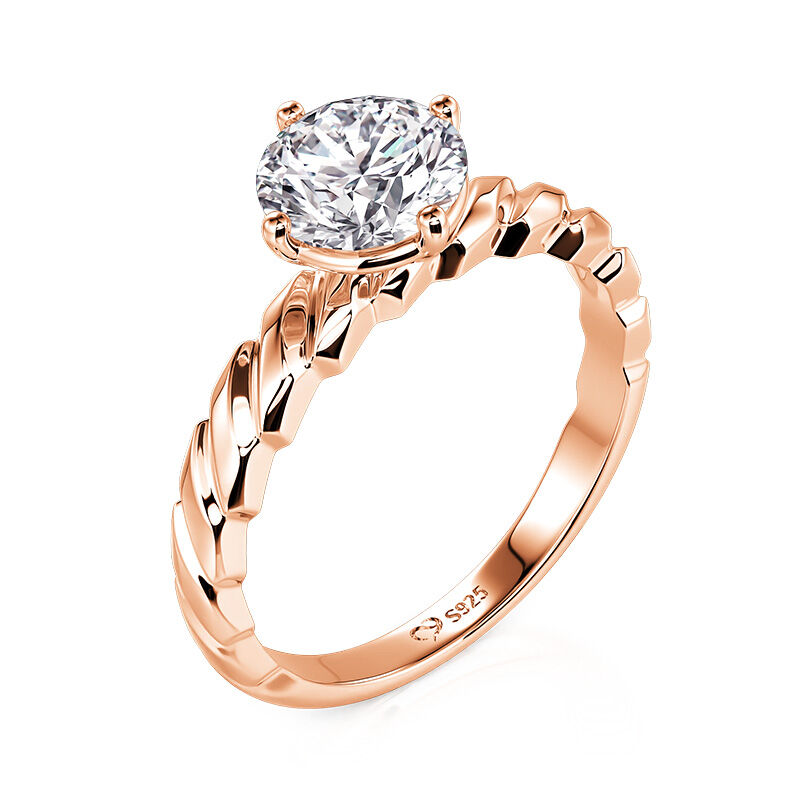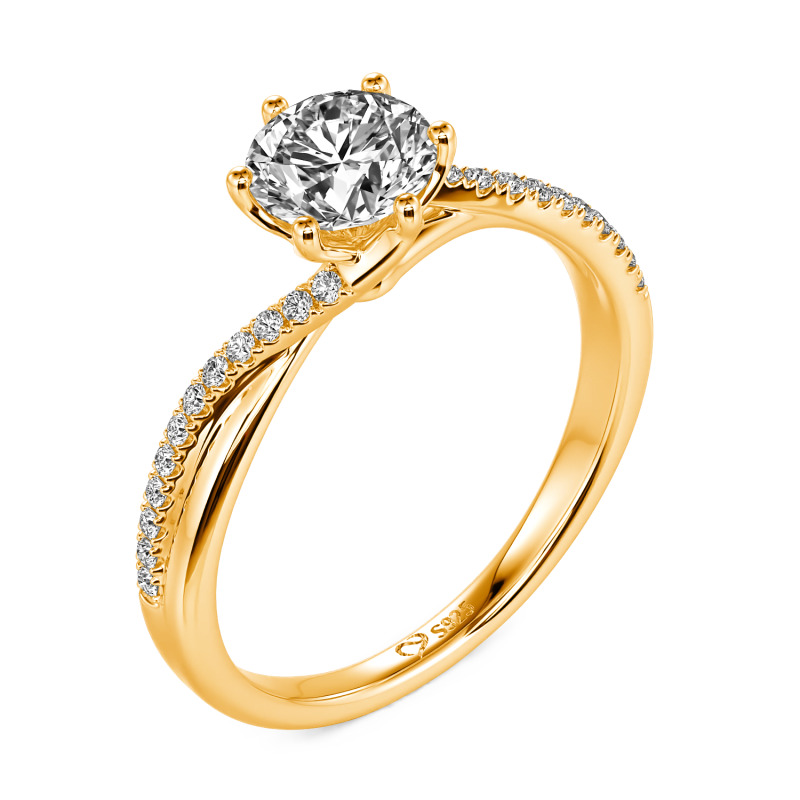The classic four-prong engagement rings setting remains the quintessential choice for bridal jewelry, celebrated for its perfect marriage of classic elegance and optimized brilliance. By employing only four delicate points of metal, this mounting minimizes obstruction, allowing the maximum amount of light to enter the center stone from nearly every angle, enhancing the diamond’s fire and scintillation. While the design is structurally sturdy enough to secure the stone, its intentional simplicity ensures that the eye is drawn entirely to the brilliance of the solitaire itself, making the four-prong an enduring and universally popular staple for showcasing round, princess, and cushion cuts.
Four Prong Engagement Rings
Meaning: The four claws represent “responsibility, love, care, and tolerance”, which are the core elements of a long-lasting marriage; It also symbolizes’ the alternation of seasons, love never fades’.
Design logic: The four claw inlay allows the diamond to have a larger exposed area, more complete light refraction, and visually appear larger and more dazzling; Although its firmness is slightly inferior to six claws, its “simple and elegant, highlighting diamond” characteristics make it a classic.
Adaptation scenario: Couples who pursue “classic and timeless”, suitable for daily wear or formal occasions.
Six Prong Engagement Rings
Meaning: The six claws correspond to “responsibility, commitment, tolerance, trust, care, and cherish”, covering key emotional dimensions in marriage.
Design logic: Six claw inlay is more stable and suitable for daily wear; Under the refraction of light, the diamond fire color is uniform, with a classic and atmospheric style.
Adaptation scenario: Couples who prefer a “traditional ceremonial feel” have a high degree of compatibility for weddings, engagements, and other occasions.
The classic six-prong engagement ring offers a beautiful and secure way to showcase a diamond. Unlike the more common four-prong setting, which leaves more of the diamond’s facets exposed, the six-prong design utilizes two additional prongs to create a more substantial embrace around the gemstone. This increased number of prongs not only offers enhanced security, minimizing the risk of the diamond becoming dislodged, but also contributes to a visually larger appearance of the center stone by creating a more encompassing frame. The resulting aesthetic is one of elegance and robust beauty, making the six-prong setting a popular choice for those seeking both security and a subtly amplified sparkle.
Four Prong Engagement Ring or Six Prong Engagement Ring
The choice between a four-prong and a six-prong setting often comes down to balancing security with maximum visibility of the stone’s brilliance. The four-prong setting is generally preferred for its modern, minimalist appearance, as it exposes the largest surface area of the diamond, allowing maximum light reflection and sparkle for cuts like the princess or round brilliant. Conversely, the six-prong setting provides unparalleled security, firmly anchoring the stone from multiple angles, making it the preferred choice for those with active lifestyles or when setting very large, valuable diamonds, though the increased metal use slightly obscures the diamond’s edge and can lend a rounder appearance to the stone.
- Choose the Engagement Ring 2026 That Best Suits Your Style
- Sterling Silver Engagement Ring: The Affordable Luxury for You
- Elongated Cushion Cut Engagement Rings for Your Proposal
- What Wedding Band Pairs Best with Pear Shaped Engagement Rings?
- The Complete Guide to Hidden Halo Engagement Rings
- How to Choose the Perfect Moissanite Engagement Ring?
- How Much Should an Engagement Ring Cost?
- Your Guide to the 5 Most Popular Gemstone Engagement Rings


